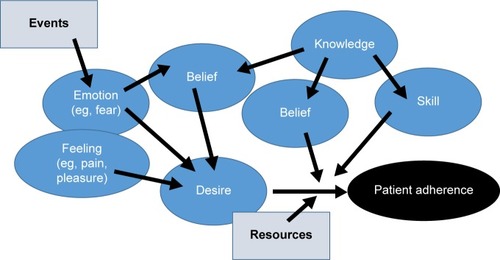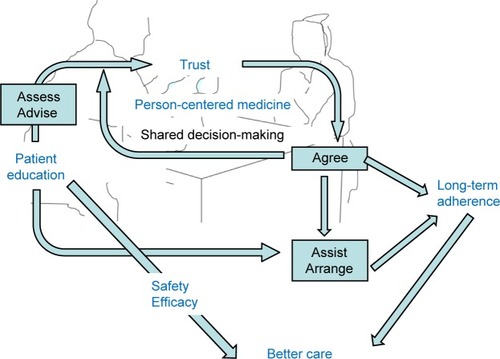Figures & data
Figure 1 The mental mechanisms of patient adherence to long-term therapies: sites of action of patient education.
Abbreviation: PE, patient education.

Figure 2 Patient education as an ethical pathway.

Figure 3 The dynamic interplay between the 5As of patient education and trust: the bases of person-centered medicine.

